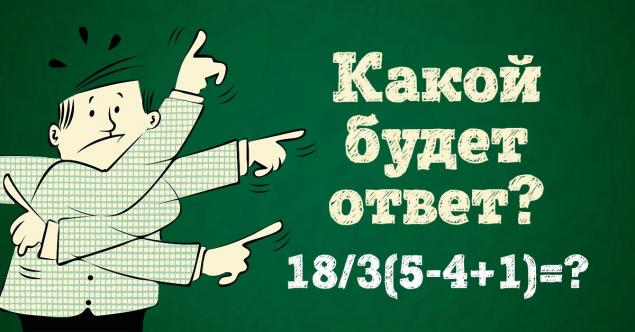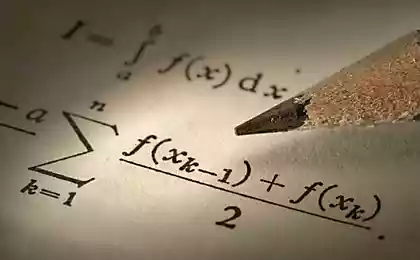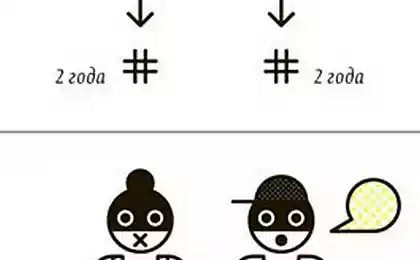129
An example for those who want to remember how good it was in elementary school.
Today we propose to recall the mathematical rules of elementary school to test yourself and solve the example in the title. Some will say it is too simple. But I can assure you that the astonishing abundance of answers in the comments clearly suggests otherwise.

In general, the order of performing arithmetic actions is one of the vivid examples of how the simple unexpectedly turns out to be the most complex.

What is there to argue about? It's math! But over and over again, college-educated adults break their spears around rather unpretentious mathematical expressions.

So back to our example. It has all the options for mathematical action. And to get the answer, you just need to build the right order of calculations.

Every student knows that arithmetic actions are performed in turn from left to right. At the same time, first of all, actions are done in brackets, then division and multiplication, and only then addition and subtraction. In words, simple, but in practice, problems arise. Where would the answer “0” and “3” come from?

According to the rules, we first perform actions in brackets. 5 - 4 + 1 = 2

Then 18 / 3 * (5 - 4 + 1) = 18 / 3 * 2
And here lies another insidious underwater rock. In theory, division can be denoted by a colon (:), an obelus (÷), a slash (/) or a fractional sign (-). With computer input, the fraction sign is often replaced with a slash for simplicity. Therefore, many people mistakenly perceive the expression “18 / 3 * 2” as a fraction, where in the numerator 18, and in the denominator 3 * 2.

However, it is very important to remember that if in the denominator we have not a number, but some arithmetic expression, then when writing a fraction in a line, it is taken in brackets according to the rules.
If our example had the form 18 / (3 * (5 - 4 + 1)), then the "/" sign would be equivalent to the fractional line. But there is no parenthesis behind the division sign, which means that it cannot be perceived as a fractional trait. Hence 18/3*2 is 12, not 3, as some users claim. So the correct answer is 12. What was your result? Perhaps we miscalculated somewhere and made a mistake? Give me your opinion on this.

In general, the order of performing arithmetic actions is one of the vivid examples of how the simple unexpectedly turns out to be the most complex.

What is there to argue about? It's math! But over and over again, college-educated adults break their spears around rather unpretentious mathematical expressions.

So back to our example. It has all the options for mathematical action. And to get the answer, you just need to build the right order of calculations.

Every student knows that arithmetic actions are performed in turn from left to right. At the same time, first of all, actions are done in brackets, then division and multiplication, and only then addition and subtraction. In words, simple, but in practice, problems arise. Where would the answer “0” and “3” come from?

According to the rules, we first perform actions in brackets. 5 - 4 + 1 = 2

Then 18 / 3 * (5 - 4 + 1) = 18 / 3 * 2
And here lies another insidious underwater rock. In theory, division can be denoted by a colon (:), an obelus (÷), a slash (/) or a fractional sign (-). With computer input, the fraction sign is often replaced with a slash for simplicity. Therefore, many people mistakenly perceive the expression “18 / 3 * 2” as a fraction, where in the numerator 18, and in the denominator 3 * 2.

However, it is very important to remember that if in the denominator we have not a number, but some arithmetic expression, then when writing a fraction in a line, it is taken in brackets according to the rules.
If our example had the form 18 / (3 * (5 - 4 + 1)), then the "/" sign would be equivalent to the fractional line. But there is no parenthesis behind the division sign, which means that it cannot be perceived as a fractional trait. Hence 18/3*2 is 12, not 3, as some users claim. So the correct answer is 12. What was your result? Perhaps we miscalculated somewhere and made a mistake? Give me your opinion on this.
Building wisdom of clever Siberians who surprise with their practicality
A new colleague caused ridicule in the serpentary, but everyone went crazy when the boss came to the corporate party with his wife























